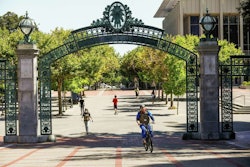
In a sense, it’s the strength and diversity of American higher education that creates its own obstacles. The student is the loser. Perhaps that’s why that, among the 82 percent of first-year community college students who state that they seek a four-year degree, only 11 percent will succeed in doing so today.
Historically, college and university presidents and their senior staffs, state and federal policymakers, and foundation leadership have looked first to the public sector whose leadership has wrestled in good faith with the dilemma of how to increase access, particularly for two-year students, to four-year public colleges and universities. To meet the challenge, public higher education leadership has generally moved in one of two ways.
The first is to apply a “big system” solution by negotiating institutional articulation agreements between affected parties. There are a number of good examples that work to provide greater access for two-year students seeking a four-year degree. However, the articulation agreement often itself becomes an impediment as rigid bureaucracy fails to translate to a clear, timely and efficient pathway for students. While we can applaud the effort, the metrics measuring success nationally fail to demonstrate the results desired.
The second is to impose state legislative mandates on public colleges and universities, sometimes tied to state funding streams. Some efforts to establish state policies, notably in places like Tennessee, show considerable promise. In many places, however, they can become a policy based on well-intentioned principles that lack the financial teeth to withstand a change in state leadership or the next economic recession. It’s hard to impose change from the top down.
It’s particularly telling that America’s independent colleges and universities are often left on the sidelines. These colleges—often smaller and deeply ingrained into the educational and cultural fabric of their communities—should be a natural place to test new ideas. They can work together to generate innovation at the state and regional levels that can be scaled nationally. Importantly, they bring one critical card to the poker game: their focus on the students. It is precisely this focus that provides the ongoing mentorship that leads to higher persistence and graduation rates.
Maybe this is where politicians, policy makers and foundation leadership should begin. Perhaps the most critical questions about how to open access to a four-year degree are: What is it that the independent colleges do that makes students persist and graduate at higher rates? What can we learn from them?




















